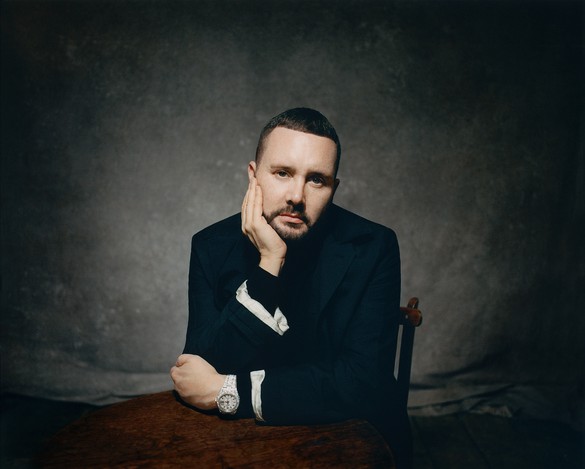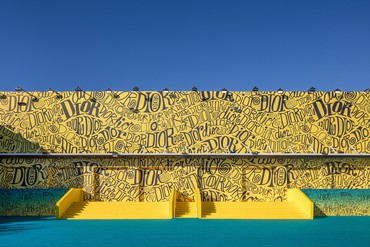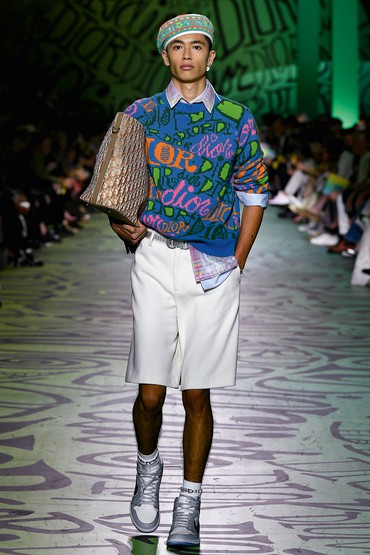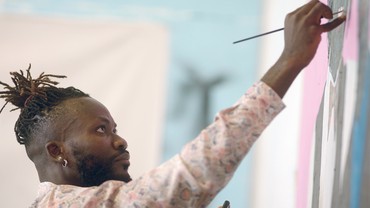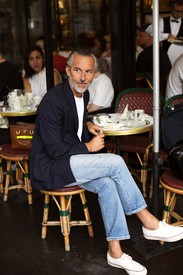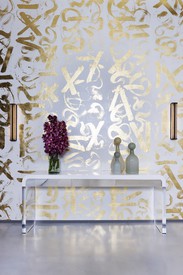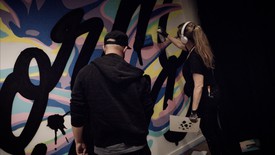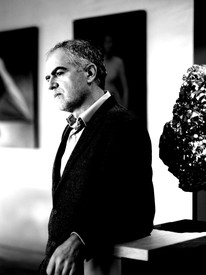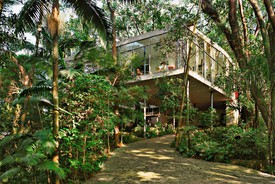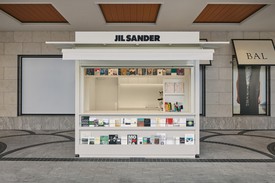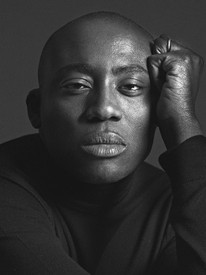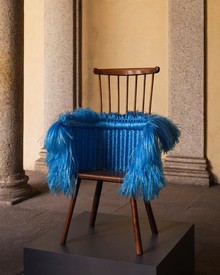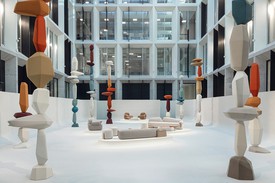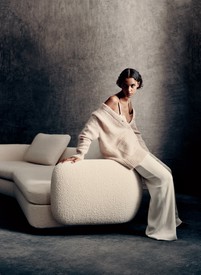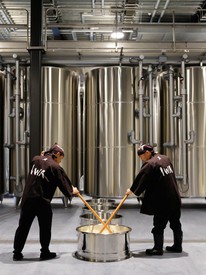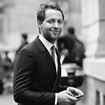
Derek Blasberg is a writer, fashion editor, and New York Times best-selling author. He has been with Gagosian since 2014, and is currently the executive editor of Gagosian Quarterly.
Derek BlasbergI thought about you during quarantine because you travel more than anyone I know. How have you handled being grounded?
Kim JonesI’m not going to lie: I’ve enjoyed being at home. I moved into my house a year ago and I’ve finally unpacked every box. Now I know where everything in the house is. I went to thirteen countries this year—and that was all before lockdown. So it’s not like I’m missing out, because I’d already done so much.
DBThe last time I saw you was at Art Basel last year in Miami, which has become a huge fashion and art mash-up. Since we’re talking about the convergence of fashion and art, I guess we can start there.
KJFirst, Christian Dior was a gallerist for fifteen years before he was a couturier. Not everyone knows that. He had links with all the major artists, he was one of Salvador Dalí’s main art dealers, he worked with Pablo Picasso, Max Ernst, Georges Braque, all these people I’m interested in. So for the Dior show in Miami, I thought it was a good spin to take that idea through Dior with contemporary people, like KAWS. I worked with Shawn [Stussy] because I wanted someone whose graphic most of our generation recognizes. He isn’t necessarily considered a contemporary artist, even though he’s trained and I think what he does is contemporary.
DBHad you been to Miami for Art Basel before?
KJI’d been, but not for a long time because it falls at a busy time for work. I’ve either got another show or we’ve got really intense fittings, and I can’t really move those things around to go and do that sort of stuff. But I’m always keeping an eye on the fair because galleries are in touch with me.
DBI had so much fun in Miami at that Dior event. It was a show, it was a concert, it was an after party, and the gallery was open so we walked through there too.
KJI’m happy to hear that. When you do a trip for a show, and if you’ve come a long way, you want to be able to do a lot. Obviously, it was also nice to have the whole studio there because you’re working and then you can go out for a little sunbathe when you’re waiting for a fitting.
DBTell me about the video you premiered in July, which was a collaboration with the Ghanaian artist Amoako Boafo.
KJAs you know, I have a childhood connection with Africa—I spent a large part of my childhood there with my family, and I grew up in a house full of African art because my father collected it. From the age of three, when we were living in Ethiopia, Botswana, Kenya, Tanzania, the first art I really saw was from these African cultures. I have memories of the way people dressed in those countries and the kind of art that was being made, like these incredible Tanzanian paintings that were on the wall in my bedroom when I was a kid. I kept them all the way through to now because, let’s be honest, I don’t like to get rid of things. When I saw Amoako’s work, I loved it. It spoke to me. I could see a fashion identity immediately.
DBYou were familiar with his work but this was the first time you’d seen it in the flesh?
KJYes. And it was important. The way he uses his fingers to paint: that looks different in person than it does in a picture. In Miami, I said to Mera Rubell, “You know, I’d really love to meet this guy and talk to him.” We met his gallerist, and then I met him and his friends. What’s funny is he’s a fan of Dior, and his friends started wearing what I do. Finally we sat down and we were like, “How can we make this work?”
DBIs that sort of a typical timeline? You hear about an artist, you go see their work, and then you collaborate?
KJOriginally it was meant for next summer, but then I had this feeling that this was the right time to do it. It was going to be for a fashion show in Paris and it was all planned, and then the lockdown happened. I have a list of dream artists I’d like to work with. Preferably, I’d like them to be alive, because then you can collaborate with them properly. With Raymond Pettibon, for example, we used existing works and then he created new works for us.
DBI don’t have to tell you that 2020 has been such a surreal year, and there’s been so much stuff that’s bubbled to the surface. I thought the tone of the video you did with him, the collaboration with a Ghanaian artist, and the collection all hit the right note for what has been a very difficult year.
KJA lot of things happened with Black Lives Matter shortly before [we released the video], and I was very aware that I wanted him to be the spotlight. It was to celebrate a Ghanaian artist. We all know there’s not enough funding for kids to go to college and for creative endeavors in any walk of life, but it’s particularly difficult in Ghana. The one thing he wanted to do when he started was to set up a foundation to give kids in Accra residences and allow them to move forward with what they want to do. At some point, when you do something, you get a feeling where it all just clicks in place. My childhood was based in lots of different parts of Africa, and I wanted to make sure that this was done correctly from day one. I wanted to celebrate this artist; it’s not really a Dior thing.
DBI’m always fascinated by your childhood. Naomi Campbell once told me that you can identify any bird by its sound.
KJYeah, I did that in Vietnam one night when we were having dinner, and she was laughing her head off. I wanted to be a zoologist before I got into fashion. [Alexander] McQueen, who was a good friend of mine, also had an aspect of the appreciation of nature. That was one of the conversations we had all the time.
DBOne of my all-time favorite collections of McQueen’s was the one that was inspired by his diving in the Maldives.
KJHe was obsessed by that completely.
DBYou’re a bit of a collector too, Kim. What is your eye drawn to?
KJI only buy things I love. I buy a variety of new things and old things. I’m looking around my library here and I see some works by [René] Magritte, Raymond [Pettibon], Frank Sinatra . . . I like all different things and they’re really mixed together.
DBYou have so many books, too.
KJThe main thing I collect is Bloomsbury, which is Vanessa Bell, Duncan Grant, Roger Fry, and Omega Workshops furniture. And first editions of Virginia Woolf, stuff like that. When I was a kid, we used to go to Charleston House, and I found it very inspiring how they all were rebellious, even though they were the English aristocracy. They didn’t want to go to war, they didn’t believe in fighting for the country. And they were creating a lifestyle, which seemed very decadent for a time when it wasn’t meant to be like that.
DBHow is everything organized? For example, where is your sneaker collection?
KJThat’s one thing I did in lockdown: get everything out of storage and catalogue it, from every photo I have to every schoolbook I have. I’ve always liked the same stuff, it just gets bigger, I guess. I’ve been reading a huge amount in lockdown. I’ll be reading a book and then I want to find out what inspired that author to write the book and then what other books inspired the author to then write in the style of so-and-so. So it gets quite, you know, lengthy, I guess, over the years.
DBOne question I like to ask people who collect things—and they always have an answer that comes straight to mind—is what’s the one thing that got away?
KJOh, God, I don’t know! Probably a couple of books. Frank Sinatra’s drinking jacket was something I wanted to buy—it was like a varsity jacket with the name of everyone he went drinking with on it, and it was at his estate sale. But I did get the self-portrait he painted that’s in that corner over there, I don’t know if you can see it.
DBI don’t think I’ve seen a Frank Sinatra painting.
KJYes, this one is interesting because he got told by his therapist to paint a self-portrait after Ava Gardner broke up with him. This clown face is how he portrayed himself.
DBWhat do you say to someone who asks whether fashion can ever be art? Or how does art inform fashion?
KJI’d say, “Andy Warhol.”
DBThat’s a good answer.
KJHe did everything, didn’t he? Did you see the Warhol Look exhibition [a traveling exhibition of 1997–99], with all the clothes that were pretty much designed by him or inspired him? I love that. Especially in the early New York downtown scene, that was really important. I think art is something you buy and you keep forever, and just because fashion is more disposable, that doesn’t mean people throw it away six months later. It’s always there.
DBDo you think you’ll work differently when things go back to normal because of the skills we’ve been forced to learn?
KJThis is the third Zoom call I’ve done in my life. I did one with Victoria Beckham and I can’t remember the other one. I didn’t want to get into the habit of looking at things on a screen. If a customer is paying that much money for something, I want to make sure the fabric is correct, the way it’s made is correct. That’s probably what’s been so successful with Dior: the sales are kind of nuts, even now, through a pandemic. I feel quite fortunate about that. I enjoy having the pauses between the work, not having to jump on a plane, having time to yourself. I’m going to be very busy when I get back, but I’m ready for it.
